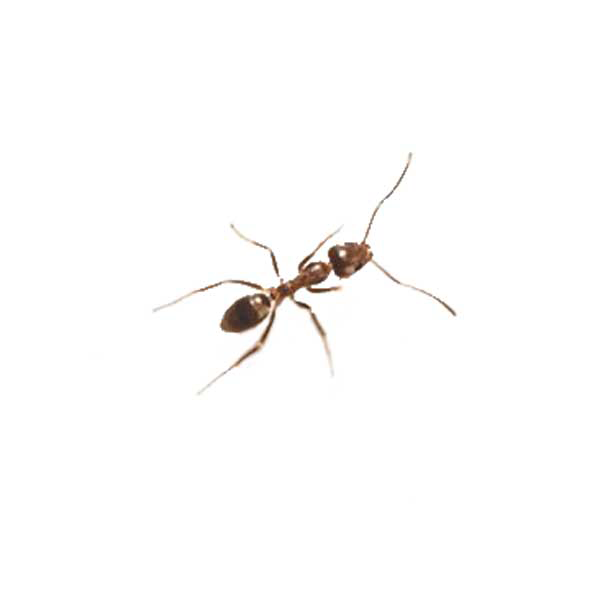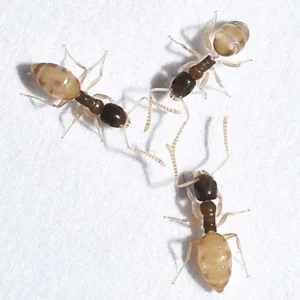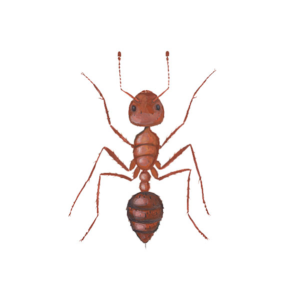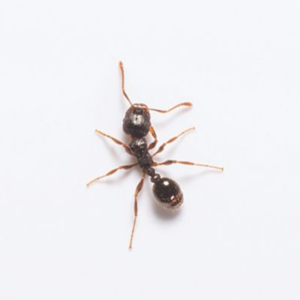Argentine Ant Identification
Argentine ants are common ants in North Carolina and are a major household and garden pests in North Carolina. Workers from different colonies are cooperative toward each other, allowing them to form large super-colonies. Argentine ant colonies can become so large that they can take over whole city blocks! They are ranked among the most stubborn home-infesting pests, contaminating and spreading bacteria wherever they forage.
What Do Argentine Ants Look Like?
They are small, typically around 2.2 to 2.8 mm in length, and are usually light to dark brown in color. Recognizable for their smooth and shiny appearance, they have six legs and a segmented body.
Signs of an Argentine Ant Infestation
Signs of an Argentine ant infestation include visible trails of ants, particularly in kitchens and bathrooms. These ants are attracted to sweet substances and can often be found in large numbers wherever food or sugary residues are present.
Habitat, Diet, Life Cycle & Bites
Where Do Argentine Ants Live?
Argentine ants are adaptable and thrive in a variety of environments but prefer moist areas. They often build nests in soil, under buildings, along sidewalks, or in debris. Argentine ants like to nest under sun-baked soil and may even clean the nest area of vegetation in order to warm their nests. However, they also need water. Drip irrigation lines provide a perfect source of water and can serve as superhighways for ants to form new colonies. Setting up quarters anywhere close to food, Argentine ants nest in the ground, concrete wall cracks, and at the base of trees. When the weather gets too dry or too wet, these ants invade homes through cracks and crevices and are found near water pipes, sinks, and potted plants. Once inside, they forage for food, feeding on meat, eggs, oils, fats, and sweet items like fruit.
Diet of Argentine Ants
Their diet mainly consists of sweet substances, but they will also eat live and dead insects, meats, cereals, and damaged fruits.When searching for food, they leave pheromone trails everywhere they go, instead of just from nest to food source. This habit ensures they never visit the same area twice.
Life Cycle of Argentine Ants
Argentine ants have a rapid life cycle, with queens capable of laying hundreds of eggs in their lifetime. The development from egg to adult typically takes several weeks, depending on conditions like temperature and food availability.
Argentine Ant Bites
While Argentine ants can bite, their bites are not harmful and do not pose a significant health risk. They do not possess a sting like some other ant species.
Are Argentine Ants Dangerous?
Argentine ants are not dangerous to humans. Although they don’t pose any serious health threats, the sheer population size of an Argentine ant colony is enough to cause chaos in any household. Because they need water to survive, bare dirt borders near irrigation ditches can be chronically infested with ants. Most ants only deposit pheromone trails on their way back to the nest from the food source. However, Argentine ants leave behind pheromone trails to and from a food resource. Because colony size increases quickly, they can rapidly form interconnecting colonies that can lead to a massive infestation. If an Argentine ant infestation is suspected, it is best to contact a professional ant exterminator.
How to Get Rid of Argentine Ants?
Effective control of Argentine ants involves eliminating food sources, sealing entry points into the home, and maintaining clean environments. In cases of large infestations, professional ant extermination may be necessary.
Argentine Ant Prevention Tips
Prevent Argentine ants by keeping kitchens and dining areas free of food residues. Store food in airtight containers and address moisture issues, such as leaks, around the home.
Need help with Argentine Ants control?
FAQs
Where are Argentine Ants Found in the US?
Argentine ants are found in many regions of the United States, particularly in warmer climates. They are common in states like California, the Southeastern US, and other areas with mild winters.
What Gets Rid of Argentine Ants Permanently?
To get rid of Argentine ants permanently, eliminate food sources, seal entry points, and reduce moisture around the home. Baits and professional pest control services are also necessary with persistent and large scale infestations to monitor activity and prevent them from returning.
What Attracts Argentine Ants?
Argentine ants are primarily attracted to sweet substances and moisture. They are also drawn to greasy foods, meats, and other household waste.





